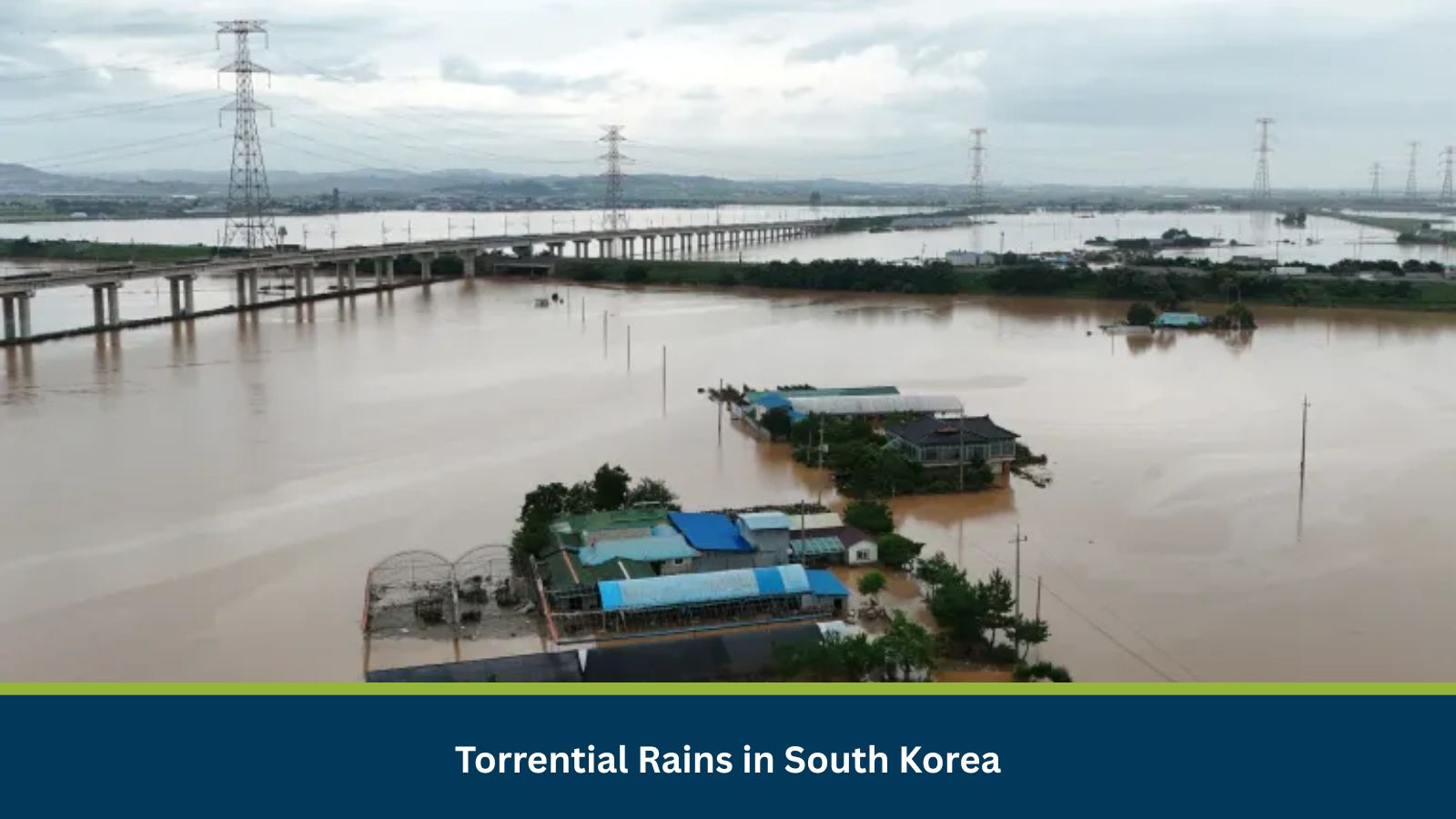What Is Happening in South Korea?
Beginning on 16 July, torrential rain in South Korea has triggered widespread devastation, flooding, and landslides across several regions. The heavy rainfall particularly impacted central Chungcheong and southeastern South Gyeongsang Province, damaging roads, homes, farmlands, and forcing over 10,000 evacuations.
As of 21 July, the storm has caused 19 deaths and eight people remain missing. Southern counties like Sancheong have been hit hardest, with significant loss of life and infrastructure destruction.
Why?
The Korea Meteorological Administration (KMA) attributes this severe heavy rainfall to the expansion of the North Pacific high-pressure system, which interacted with cold northern air and drew in tropical moisture, forming the basis for torrential rain in South Korea.
The system’s persistence is also linked to global warming, as rising ocean temperatures and atmospheric instability amplify the strength and duration of such events. This raises larger questions about the country’s preparedness and structural resilience in the face of accelerating climate challenges.
Consequences Across Sectors and Communities
- Power & Communications:
Over 41,000 households experienced power outages. Wireless and landline networks were affected, with 7,000 cell towers briefly down, most of which have now been restored. - Damage to Public and Private Assets:
The rain has damaged 1,999 public infrastructures and 2,238 private facilities across the nation. Additionally, Gapyeong County suffered deadly landslides. - Evacuations and Relief Measures:
Nearly 10,000 households across 15 cities and provinces have been temporarily relocated. The government has deployed 2,500 military personnel to aid in rescue and cleanup operations. - Precipitation Records:
Sacheong County reported nearly 800 mm of rainfall, followed by Hapcheon-gun, Hadong-gun, and Gwangyang, all exceeding 600 mm in precipitation.
Medium-Term Outlook: From Emergency to Adaptation
While rainfall alerts have been lifted, the KMA forecasts a heatwave until 29 July in regions like South Jeolla, Gangwon, and Jeju Island. The shifting climate spectrum from floods to heat stress—demands immediate investments in climate-resilient infrastructure and disaster management frameworks.
Organisations with operations in South Korea must assess the impact of torrential rain on supply chains, employee safety, and logistics. This includes scenario planning, early warning systems, and continuity protocols in the face of heavy rainfall risks.
Partner with MitKat
MitKat’s Datasurfr platform delivers real-time, AI-powered risk intelligence, filtered and contextualised by expert analysts to support proactive decision-making. Paired with our Protective Services, we turn intelligence into action safeguarding your leadership wherever they operate. Collaborate with MitKat to build true business resilience. From Risk Consulting and Security Design to Cyber Security and Protective Services, our integrated solutions help organisations navigate today’s complex threat landscape and build robust, future-ready risk management frameworks.
Get in touch with us today!






